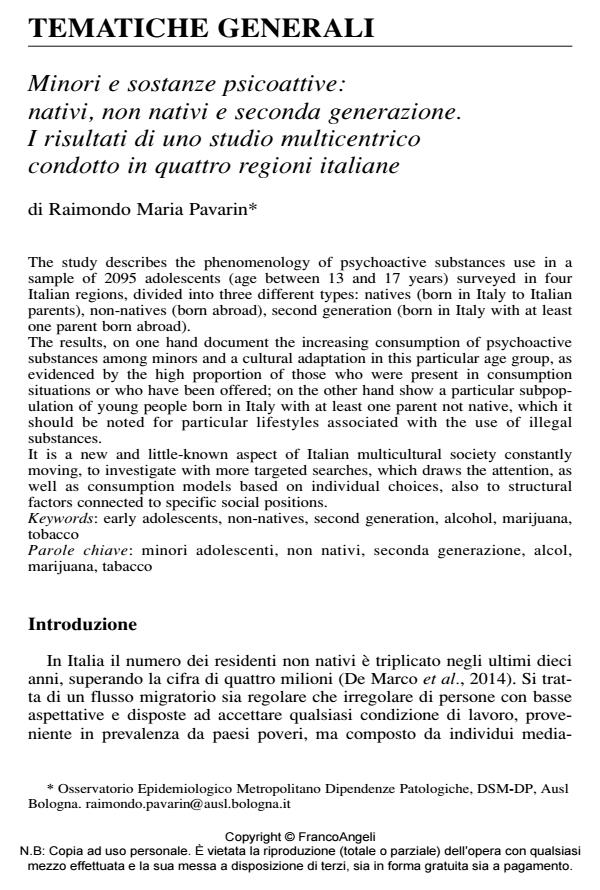Minori e sostanze psicoattive: nativi, non nativi e seconda generazione. I risultati di uno studio multicentrico condotto in quattro regioni italiane
Journal title SALUTE E SOCIETÀ
Author/s Raimondo Pavarin
Publishing Year 2014 Issue 2014/3
Language Italian Pages 13 P. 181-193 File size 613 KB
DOI 10.3280/SES2014-003015
DOI is like a bar code for intellectual property: to have more infomation
click here
Below, you can see the article first page
If you want to buy this article in PDF format, you can do it, following the instructions to buy download credits

FrancoAngeli is member of Publishers International Linking Association, Inc (PILA), a not-for-profit association which run the CrossRef service enabling links to and from online scholarly content.
The study describes the phenomenology of psychoactive substances use in a sample of 2095 adolescents (age between 13 and 17 years) surveyed in four Italian regions, divided into three different types: natives (born in Italy to Italian parents), non-natives (born abroad), second generation (born in Italy with at least one parent born abroad). The results, on one hand document the increasing consumption of psychoactive substances among minors and a cultural adaptation in this particular age group, as evidenced by the high proportion of those who were present in consumption situations or who have been offered; on the other hand show a particular subpopulation of young people born in Italy with at least one parent not native, which it should be noted for particular lifestyles associated with the use of illegal substances. It is a new and little-known aspect of Italian multicultural society constantly moving, to investigate with more targeted searches, which draws the attention, as well as consumption models based on individual choices, also to structural factors connected to specific social positions.
Keywords: Early adolescents, non-natives, second generation, alcohol, marijuana, tobacco
Raimondo Pavarin, Minori e sostanze psicoattive: nativi, non nativi e seconda generazione. I risultati di uno studio multicentrico condotto in quattro regioni italiane in "SALUTE E SOCIETÀ" 3/2014, pp 181-193, DOI: 10.3280/SES2014-003015